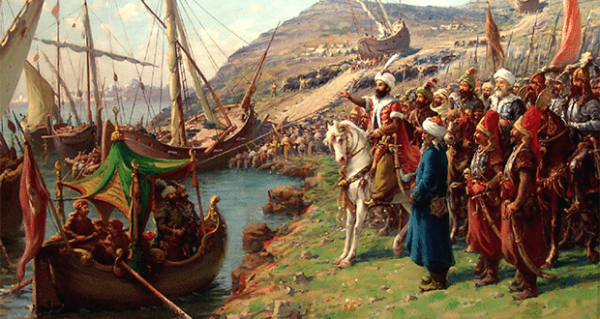Antoine Boutros - The Flexible Empire (1)
According to Ottoman history, soon after the occupation of Constantinople in 1453, the Sultans focused on their central project, which resulted in the century that followed in the establishment of a classic concept for an Ottoman state with a central government and an awqaf system. The Ottoman government in Istanbul was close to perfection during that phase.
As a matter of fact, the period between 1300 and 1700 is viewed as a period of incessant expansion that led to the establishment of the economic and social structures and of military dominance. The government of Istanbul realized its full administrative perfection by merging its frontier with the empire and increasing control over the remote provinces, however far away they were.
In 1916, Herbert Adams Gibbons, an American journalist and an acclaimed academic who ended up lecturing on international affairs, released his publication The Foundation of the Ottoman Empire, where he explained that the Ottomans were in fact a new race that arose from the mingling of the Greek and Balkan Slavs who professed Islam with the Turks. He accounted for Ottoman growth by arguing that the new race guaranteed the perpetuity of Byzantine administrative practices under an Islamic guise. In other words, since the Ottomans inherited the Byzantine traditions and practices, they continued to be seen as a Byzantine-Muslim admixture until the Arab conquest in the early 16th century. Gibbons considered that the mighty Ottoman Empire could not have emerged from purely Turko-Muslim roots, hence his proposed Byzantine-Christian origins. The empire’s success was inevitable on account of its descent from a superior race mixing wild Asiatic blood with European stock, and administratively on account of the lineal Byzantine descent.
The Ottoman response to these assertions was expressed by the Turkish researcher Fuat Koprulu in an expansive study published in 1922. Koprulu rejected in particular the assumption that the Ottoman administration had Byzantine origins. He demonstrated the extent to which the Ottoman institutions derived from Seljuk and Ilkhanid precedents, thus repudiating the idea that the Ottomans were unqualified to build a state. Two years later, in 1924, German scientist Friedrich Giese responded to Gibbons’s analysis in an important study pointing to the prior role of Anatolia’s league of craftsmen and merchants in passing administrative infrastructure to the Ottoman entity.
Ever since it was advanced by the German Orientalist Paul Wittek, the ‘Ghazi-Thesis’ has in turn become one of the most solid and most followed concepts. The content of the theory holds that the Ottomans were not a tribe or a people linked genealogically; rather they were a group of Anatolian Muslims bound by a shared desire to fight Christian infidels. With time their frontier guards had grown in strength and ultimately formed a community of their own, which led them finally to dominate the former Byzantine and the Seljuk frontiers. This theory, which viewed the Ottomans as a group of warriors devoted to fighting the infidels and converting them to Islam through a series of invasions in north western Anatolia took over the thinking of Western scholars and intellectuals, although at the time it was rejected in Turkey. Despite the criticism directed at this theory, the suggestion of flexible and continuous expansion with the purpose of invading the frontier in pursuit of stability is still influencing the general concepts of the Ottoman history, both in thought and in practice.








Leave A Comment